The gorgeous world of Oscar Ghiglia
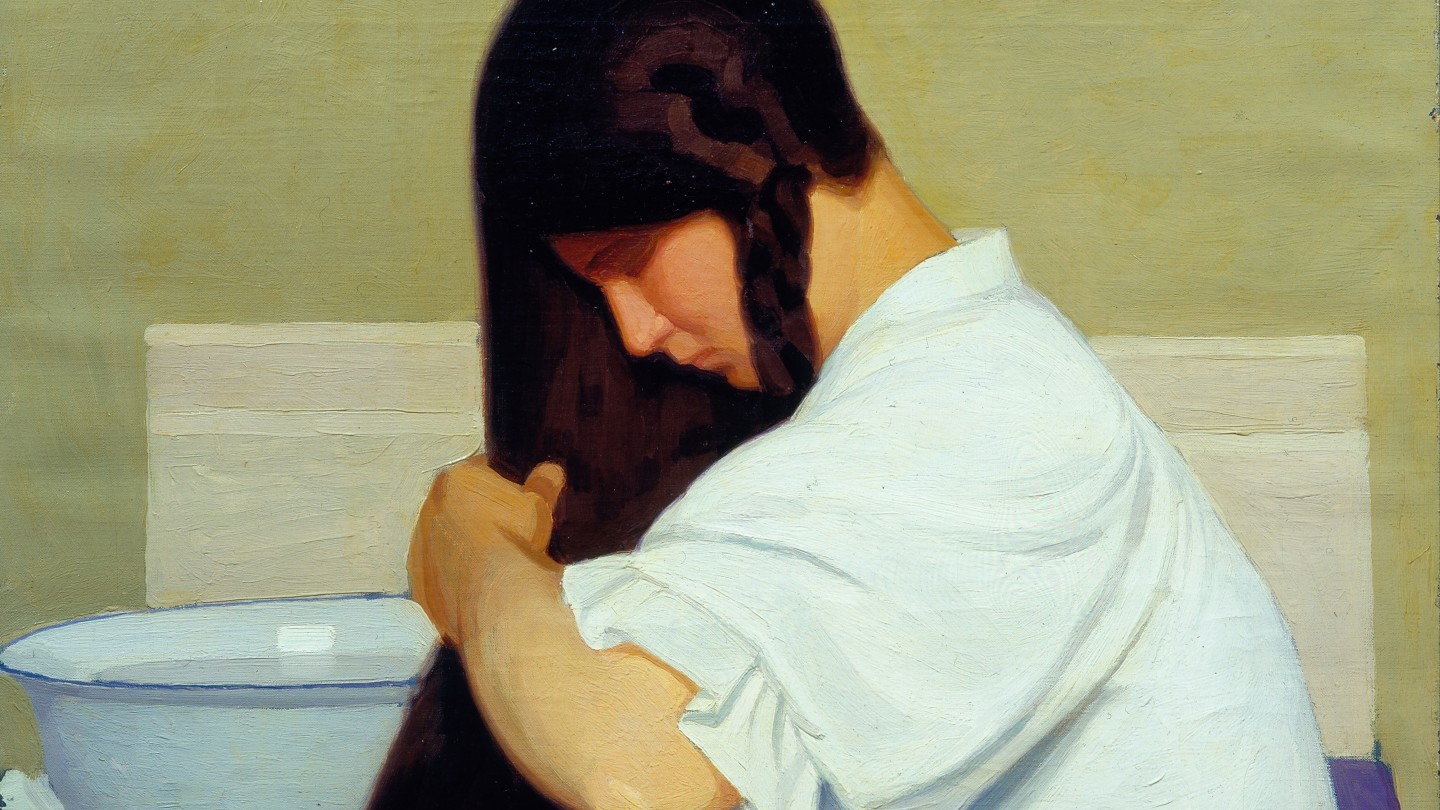
Roula Khalaf, Editor of the FT, selects her favourite stories in this weekly newsletter.
A boy’s head complete with a rash of dark curls tilts just so, his nose almost touching an orange that is sitting in a ceramic fruit bowl on a table in front of him. He’s wearing some kind of dark jacket with a contrast beigey collar. The lighting is a little moody – it’s glorious, actually – with a putty-coloured wall. It evokes many things – and it also, to a fashion lover like me, feels very Prada. But who is the boy – and who is the artist?
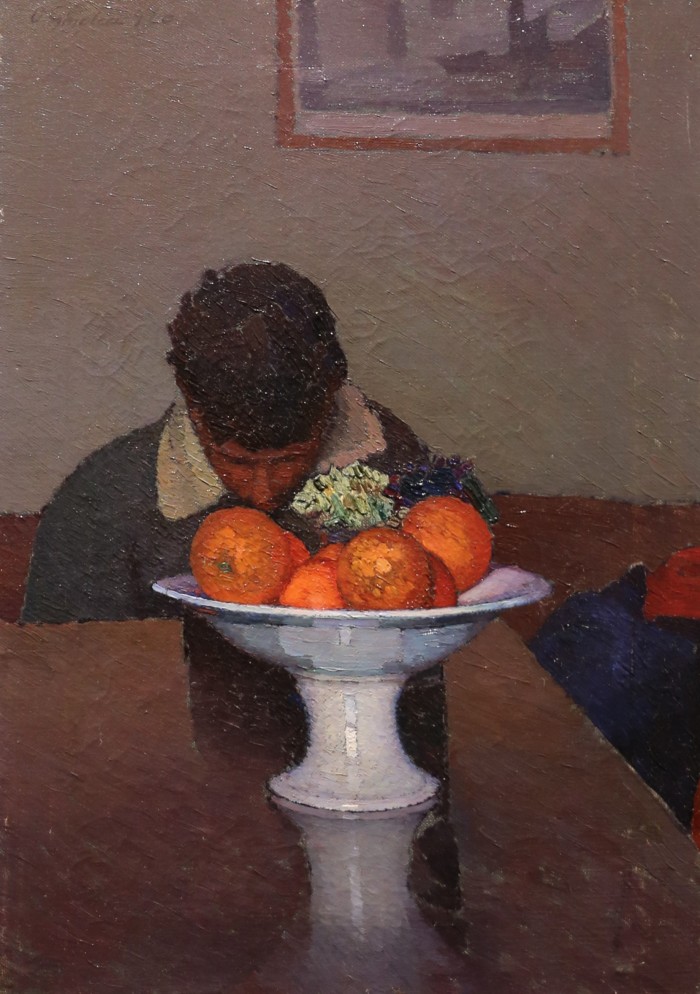
This is Paulo che legge, an oil painting by Oscar Ghiglia from 1920, on show in Florence at Oscar Ghiglia: The Years of the Novecento Italiano at the Palazzo Medici Riccardi. It’s a glorious part of a retrospective which gives the artist – little-known even in his native Italy – his dues. Born in Livorno in 1876, he chose Florence to pursue his artistic ambitions. Influenced by Giovanni Fattori, Titian and Cézanne, as well as Swiss and German artists such as Arnold Böcklin and Franz von Lenbach, he was also friends with Amedeo Modigliani; they lived together for some months in Florence in 1902. Leonardo Ghiglia, co-curator of the show (with Lucia Mannini and Stefano Zampieri) and the great-grandson of the artist, even suggests his great-grandfather proved an inspiration to Modigliani. (There is a nude of his in the Florence show.) Yet Ghiglia’s work wasn’t seen by many until the 1920s – and was not really exhibited until the 1960s, sometime after his death in 1945.
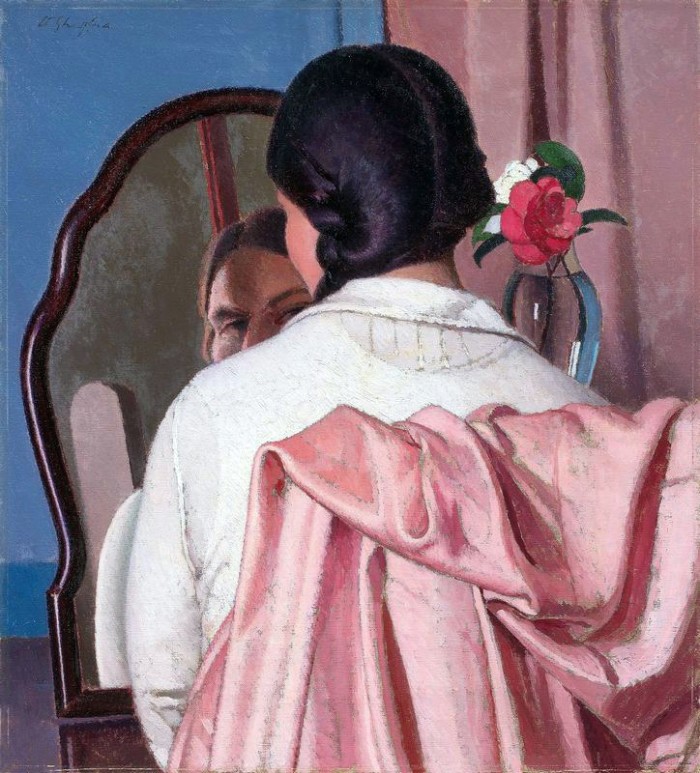
“He is still not well known even in Italy,” confirms Leonardo. “He is still not included in the mainstream of Italian art of the first part of the 1900s because of his unique style – very personal and far from every other Italian painter, particularly over the 1920s, when Italian art was related to ideas of classicism.” Oscar Ghiglia produced still lifes featuring coloured balls of wool, multi-coloured striped fabrics, lemons, flowers and vases, alongside thoughtful portraits, nudes, landscapes and a particularly stunning series of women captured from behind, including the artist’s wife. He has been the subject of a few shows across Italy in the last few decades, but “the exhibition [in Florence] was the logical consequence of working on a definitive catalogue of Ghiglia’s body of work,” says Leonardo Ghiglia. “We thought the time had come to celebrate him in his own hometown, striving to locate his figure in a proper perspective in 20th-century Italian art.”
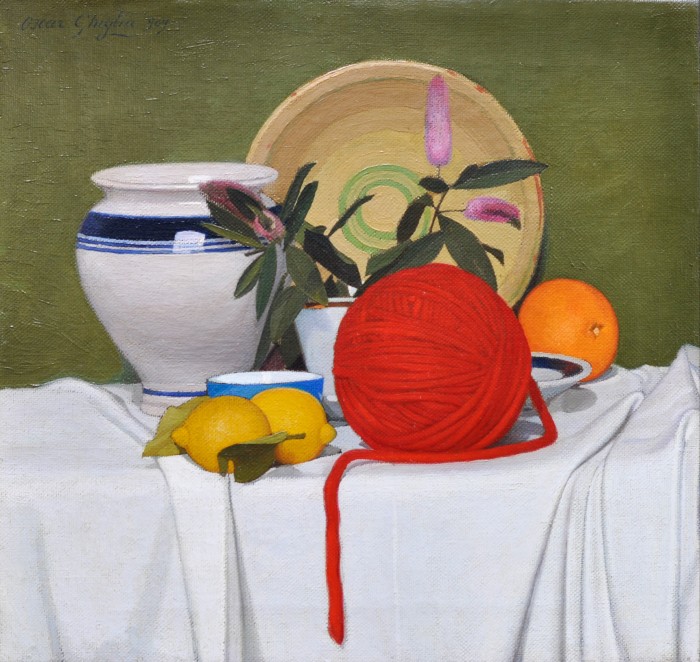
One of the things that Leonardo Ghiglia says unites many visitors to this exhibition – and indeed is impossible to ignore in his work – is the artist’s skill as a colourist, whether it’s a canvas bursting with ripe brightness or one more rich and brooding. In still lifes such as Natura morta con gomitolo e limoni of 1909, your eye literally dances around the canvas, from the ping of a red ball of wool to a pale-yellow ceramic bowl resting against a backdrop of off-khaki. The combinations of tone and colours are complex, never boring, and sometimes clash with an absolute nonchalance – which brings us back to Prada.
We can’t say if Miuccia Prada has ever seen Ghiglia’s paintings; considering her long relationship with contemporary art it’s not impossible, although Ghiglia could be too traditional for her tastes. Either way, there does seem to be something definitely proto-Prada about his paintings. In Donna di spalle in un interno, the white and red print on black calls to mind the women’s SS13 collection; while the bourgeois mood of Ritratto di signora con calle recalls the ladylike film noir-ish elegance and furs of AW13.
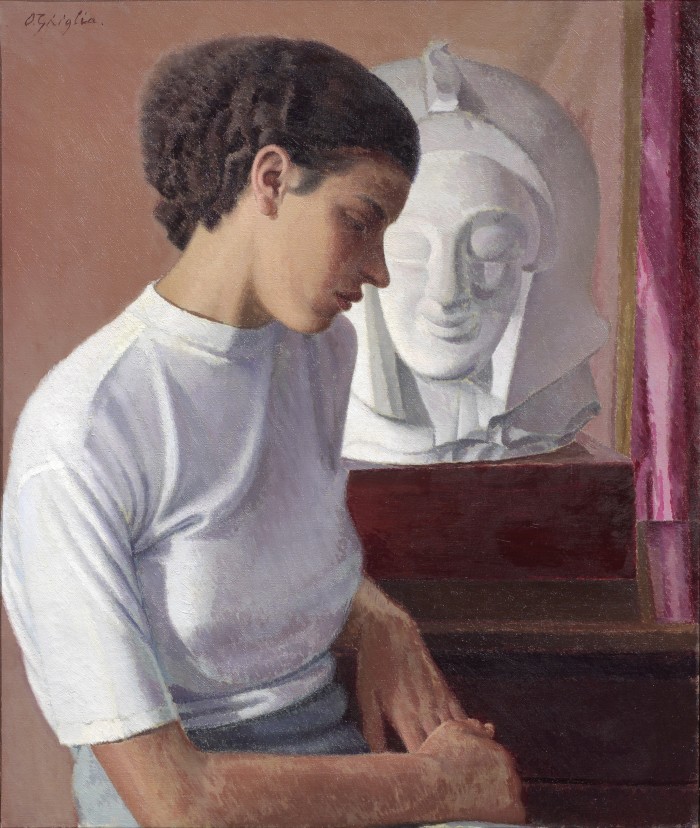
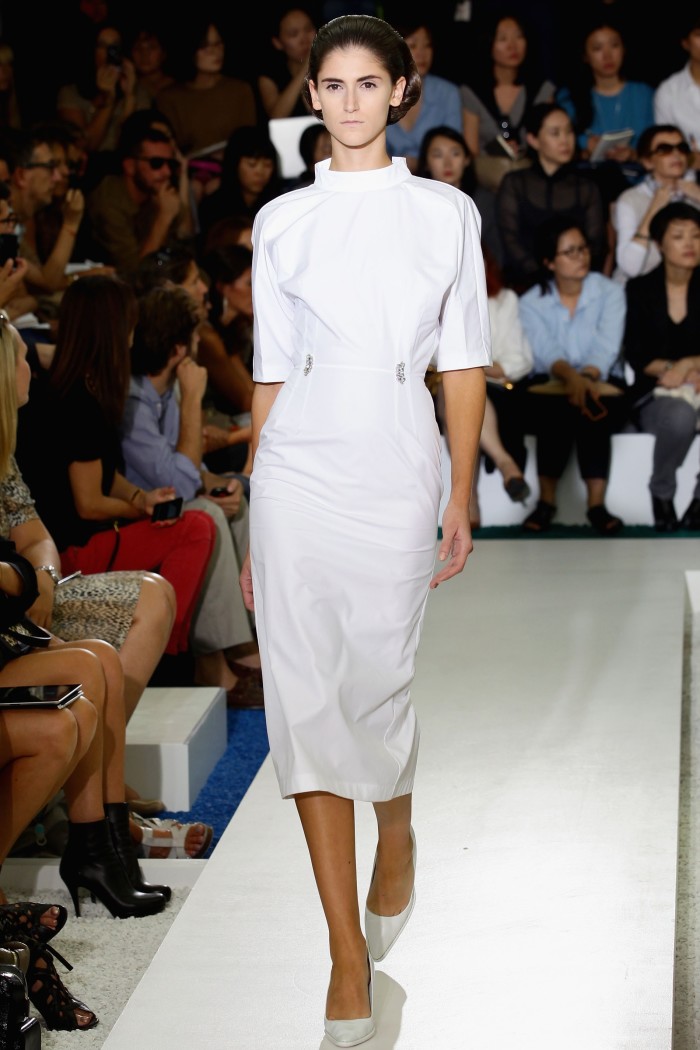
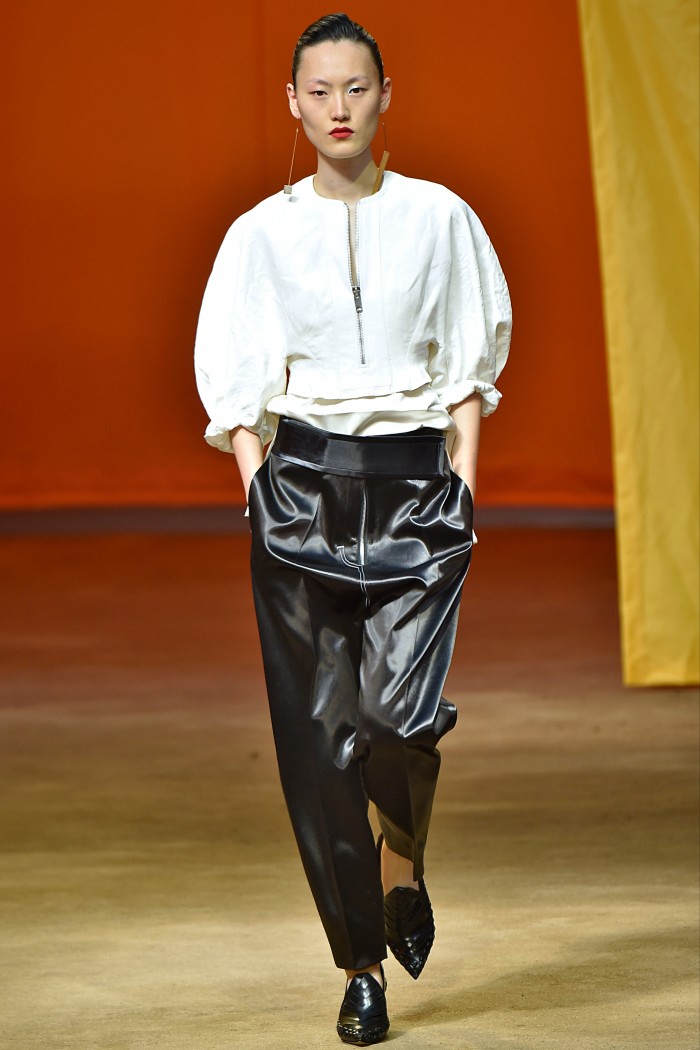
There are more fashion hints. Another highlight of the exhibition is Pensieri, from 1935, a portrait of a woman in profile, wearing a very simple white top with a slightly raised neckline. A masterclass in minimalism, it recalls both Jil Sander and Phoebe Philo-era Celine. Meanwhile Ritratto di Giuseppe Prezzolini of 1907 – also devoid of colour save for an amazing slab of green at its top – has a whiff of the fabulously moody voluminous silhouettes recently shown by Anthony Vaccarello for Saint Laurent men’s SS23 collection.
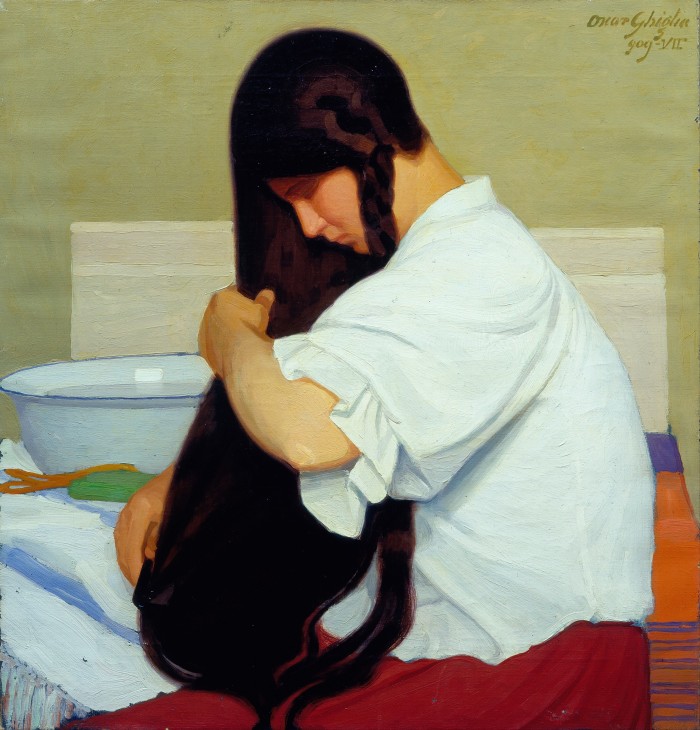
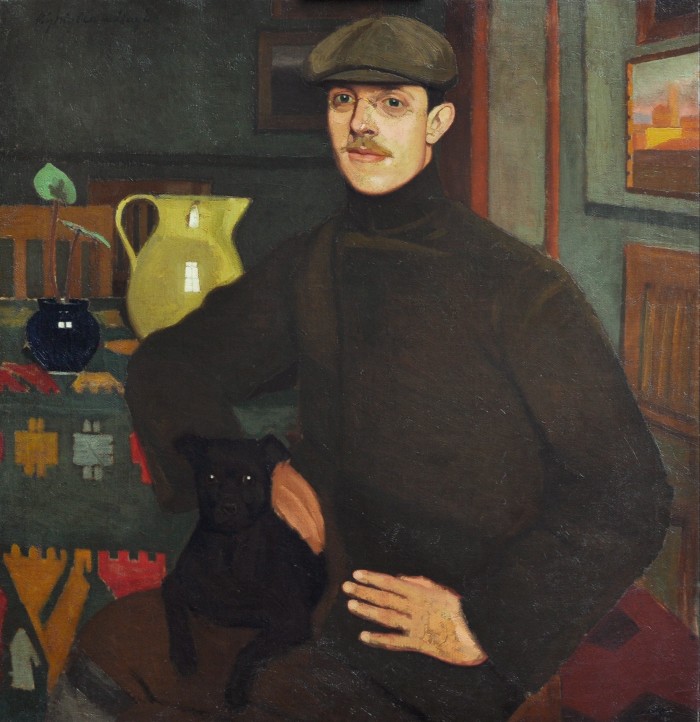
Yet Leonardo Ghiglia doesn’t think his great-grandfather was necessarily interested in fashion. “His interest is mostly in the way they [clothes, fabrics] generate reflections, the way they look one next to the other, the various ways they absorb light,” he says. “He himself was a very well-dressed man, although money was always short. As far as I know, he wasn’t particularly interested in changing fashions.”

A photograph in the exhibition depicts Ghiglia as a chicly dressed man, in collar and tie, sharp-shouldered suit, complete with a moustache. But Leonardo prefers a musical analogy when looking at the works, saying that his great-grandfather’s aim was for a sense of harmony – that his use of colour after 1908 was “vigorous and rich, but never violent or out of tune.” He continues: “What a single object represents doesn’t matter to Ghiglia. He is most interested in how elements ‘sound’ together.” But perhaps it’s another collector who has summed his work up best: “He is a painter of no period – and at the same time relevant to every period.” Nearly 80 years after his death, this feels more true than ever.
Oscar Ghiglia: The Years of the Novecento Italiano is on show at Palazzo Medici Riccardi until 13 September; musefirenze.it
Comments